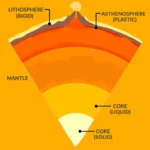Want that perfectly faded, worn-in look on your jeans? For years, the fashion world has used stone washing to achieve that coveted vintage aesthetic. Starting with rough pumice stones, the process has evolved significantly! This guide explores the history and science of stone washing, from traditional techniques to today’s eco-friendly alternatives. We’ll examine how it’s done, the environmental impact, and what the future holds for this fascinating process. Whether you’re a clothing manufacturer, a brand representative, or simply someone passionate about environmental sustainability, this guide will help you understand how to achieve that perfect look without harming our planet. Let’s dive into the world of stone washing and discover ways to make it more sustainable.
Stone Washing: A Historical and Technological Journey
The faded, worn look on your favorite jeans is the result of stone washing. This technique has a rich history, and its evolution reflects our growing awareness of environmental responsibility.
This exploration includes:
- Sustainable alternatives like enzyme washing and laser treatments offer comparable aesthetics while significantly reducing the environmental footprint, contributing to eco-friendly fashion.
- Traditional stone washing with pumice stones consumes vast quantities of water and produces significant chemical waste, impacting water conservation efforts.
- Consumer demand and increasingly stringent environmental regulations are driving the industry toward more eco-friendly practices.
Stone Washing’s Early Days: A Rocky Beginning
Stone washing, initially popularized in the 1980s, gives clothes a vintage look. The original method was simple: clothes and pumice stones were tossed into a giant washing machine with water and chemicals. This process created a worn, faded effect, though the precise inventor remains somewhat of a mystery. While this early approach revolutionized fashion, its environmental impact was far from ideal and contributed to textile waste.
From Pumice to Progress: Exploring Different Stone Washing Techniques
The traditional pumice stone method had several drawbacks, including inconsistent results and fabric damage. More significantly, it was incredibly wasteful, producing significant amounts of denim sludge.
Enzyme washing presents an innovative alternative. This technique utilizes natural enzymes (proteins) to gently break down fabric fibers, creating a more even fade while significantly reducing water and chemical use. This method promotes green chemistry and is far more eco-friendly.
Laser technology represents the cutting edge. Manufacturers using focused laser beams can selectively lighten areas of fabric, creating precise and detailed designs. It requires minimal water and chemicals, revolutionizing sustainable textile production and marking it as arguably the most environmentally friendly option.
Here’s a side-by-side comparison of these three methods:
| Technique | Process | Pros | Cons | Environmental Impact |
|---|---|---|---|---|
| Pumice Stone Wash | Pumice stones and garments tumble together in water, creating abrasion. | Creates an authentic vintage look. | Inconsistent results, high water and chemical usage, can be harsh on fabrics. | Very High |
| Enzyme Washing | Enzymes gently break down fabric fibers, creating a faded effect. | Consistent results, eco-friendly, softer fabrics, more controlled fading. | May not achieve extremely faded effects. | Low |
| Laser Technology | Precise lasers lighten specific fabric areas to create intricate designs. | Precise control, sustainable, minimal water and chemical usage, allows for complex and detailed designs. | High initial investment, may not perfectly replicate the texture of traditional stone washing techniques. | Very Low |
The Environmental Footprint: A Call for Transparency
Traditional pumice stone washing has significant environmental consequences. The large quantities of water used are concerning, and wastewater often contains chemicals and pumice particles, harming aquatic ecosystems. Enzyme washing minimizes the environmental impact by significantly reducing water and chemical use. Laser technology further reduces consumption. Ongoing research is vital to understanding long-term effects, including the energy required for laser systems. This prompts the question: Is it time for eco-conscious manufacturing?
Sustainability: Embracing the Future
The fashion world faces increasing pressure to adopt sustainable practices as consumers demand transparency and environmental responsibility. This demand has spurred innovation in stone washing. Closed-loop systems recycle and reuse water and chemicals, and the use of eco-friendly chemicals and bio-based enzymes is rising. These exemplify circular fashion principles.
A Collective Call to Action
Creating a more sustainable future for stone washing requires collective action from all stakeholders:
- Manufacturers: Invest in enzyme washing and laser technologies and implement closed-loop water systems to minimize waste.
- Brands: Be transparent about production methods, source sustainably-produced denim, and promote eco-friendly practices to enhance brand sustainability.
- Consumers: Make informed choices, support brands prioritizing sustainability and transparency, and demand better practices from clothing companies.
- Regulators: Enforce stricter environmental regulations for the textile industry and incentivize sustainable practices.
The evolution of stone washing demonstrates the potential to balance fashion trends with environmental responsibility. As the journey continues, collective action will drive further progress. Ongoing research will refine best practices, and sustainable innovation will continue to emerge.
Comparing the Environmental Impacts of Stone Washing Techniques
Key Takeaways:
- Traditional stone washing is water-intensive and generates chemical waste, leading to concerns about water pollution.
- Enzyme washing and laser treatments offer comparable aesthetics with a reduced environmental footprint.
- The economic viability and scalability of sustainable methods are evolving, indicating promise for sustainable business practices.
- Comparing the environmental impacts requires analyzing water usage, chemical pollutants, energy consumption, and waste generation for each technique.
- Consumer demand and stricter regulations are driving the industry toward eco-friendly practices.
A Look Back: The Evolution of Stone Washing
Stone washing began with pumice stones to create a unique worn look on denim. While effective, this method proved wasteful and environmentally damaging. The industry then shifted to enzyme washes, a gentler approach that lessened the environmental burden. Laser technology offers precision and control while reducing water and chemical usage, supporting zero waste denim practices.
Dissecting Denim Wash Techniques
Let’s examine the three main stone washing methods:
1. Pumice Stone Washing: This classic technique involves tumbling denim garments with pumice stones in large washing machines. It creates a well-worn look but causes high water and energy consumption, along with the disposal of pumice residuals.
2. Enzyme Washing: Enzymes are biological catalysts that break down cotton fibers in a controlled manner, creating a softer and faded appearance. This technique reduces water usage and eliminates pumice, lessening waste and promoting resource efficiency.
3. Laser Technology: Lasers precisely abrade the fabric, granting designers control over fading and distressing while minimizing water and chemicals.
Evaluating Environmental Costs: Comparing Stone Washing Techniques
Comparing the environmental impacts of stone washing techniques requires a multifaceted assessment, considering water consumption, chemical usage, energy demands, and waste production. While precise figures are often proprietary, examining relative differences provides valuable insights. Enzyme washing consistently uses significantly less water than traditional stone washing, affecting the overall water footprint.
Sustainable Solutions: Minimizing Environmental Impact
The industry is pursuing sustainable alternatives. Closed-loop water systems recycle and reuse water, eco-friendly chemicals replace harsh agents, and laser technology and ozone treatments are further minimizing impact. Implementing and scaling these technologies requires investment, supporting sustainable investments.
The Future of Denim: Trends and Challenges
Consumer demand for sustainable denim is increasing, and stricter environmental regulations are forcing change. The future depends on collaboration between brands, manufacturers, and regulators to create a sustainable denim industry through transparency, investment, and a shift toward circular economy principles.
Eco-Friendly Stone Washing Techniques for Sustainable Denim Production
Key Takeaways:
- Traditional stone washing and acid washing are water-intensive and generate significant chemical waste, posing environmental risks.
- Sustainable alternatives like laser technology, ozone treatment, and enzyme washing drastically reduce environmental impact.
- Consumer acceptance of slightly altered aesthetics is key to the success of sustainable methods, influencing the sustainable consumerism movement.
- Collaboration between brands, manufacturers, and consumers is vital for a successful transition to eco-friendly practices.
- Stricter regulations accelerate the transition to sustainable practices.















